KFAS and Rice University’s Baker Institute for Public Policy are co-hosting a hybrid roundtable titled “The Role of Energy Transition in Economic Diversification in the State of Kuwait – Towards Net-Zero Emissions by 2060.
Human Ingenuity
To invest in Kuwait’s human capabilities—fueling people’s ingenuity and cultivating a future mindset—we will meet shifting demands for training and capacity development with rigorous gap analyses and needs assessments.
Click Here
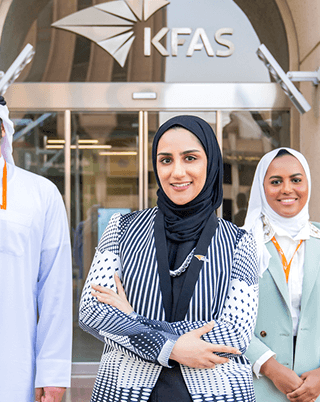
Viable Innovation
To catalyze viable innovation, we will continue to empower programs and practices that equip Kuwait to meet present and future challenges, converting research outputs into applied knowledge and technologies.
Click Here
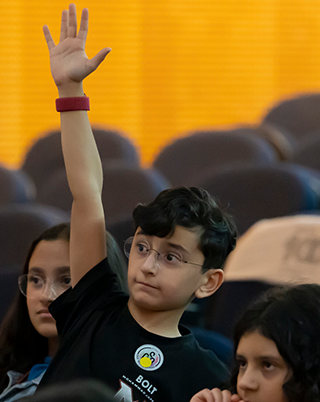
Robust Research Ecosystem
During 2025–2029, we will focus our efforts and build on our 45+ year legacy in supporting high quality research projects that tackle local and complex global challenges affecting Kuwait.
Click Here
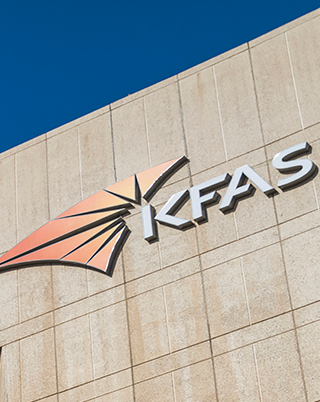
Who We Are
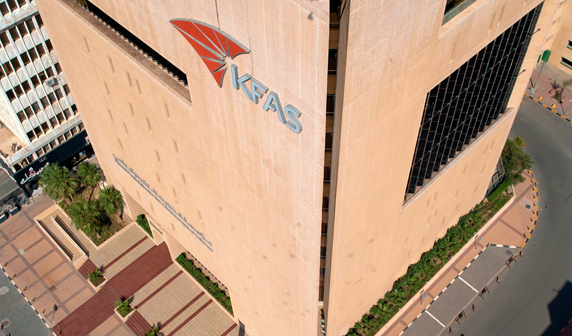
The Kuwait Foundation for the Advancement of Sciences (KFAS), a private non-profit organization
The Foundation’s efforts toward fostering STI to address national challenges first began through the pledge made by the private sector shareholding companies to fund the Foundation based on a set percentage of their annual profits — currently at one percent — as well as through the incorporation of a unique governance modality, in which the Board of Directors is chaired and appointed by the Amir of the State of Kuwait. Today, KFAS’s impact is prominently embedded within the country’s scientific and technological accomplishments and advancements.
How can we help you?
Looking For a
Success Stories
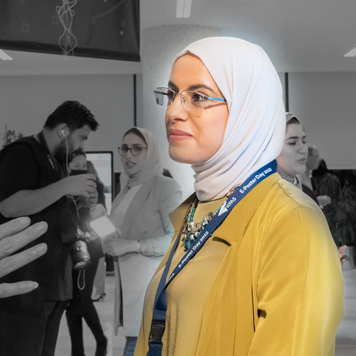
Intisar Al-Hatlani: Analytical chemistry makes every drop count
Improvements in forensic technologies help law enforcement identify suspects and solve cases more quickly. Intisar Al-Hatlani is a pioneer in analytical chemistry in Kuwait, as she works to achieve the goals she dreamed of while she was in school. About this, the analytical chemistry specialist at Kuwait University said: “I used to follow all the TV programs that dealt with solving crime mysteries. I would see them using the same tools that we have in our lab. I know the episodes weren't realistic, but it was so engaging to me. I saw how chemistry is being used in a real and important field, and all I wanted to do was do it.” Al-Hatlani's interest in analytical chemistry grew at the University of Hull in the United Kingdom, where she spent her scholarship to complete her postgraduate studies, and the required major was analytical chemistry. The winner of the 2020 Jaber Al-Ahmad Prize for Young Researchers in the Field of Natural Sciences and Mathematics, awarded by the Kuwait Foundation for the Advancement of Sciences (KFAS), said: “I found it really fascinating. If you can analyze something to determine what it contains and how much, you can answer many questions.” Her interest in the subject stems in part from the challenge of solving puzzles. Comparing scientific research to solving a crime, she said, "You have several clues and they are all important, but it is up to you to decide which one is more important. Chemical analysis may help by extracting as much information as possible from each piece of evidence.” For example, fingerprints have been a staple for detectives for more than a century, but experts like Al-Hatlani can get a lot more out of them than was previously possible. Al-Hatlani said that fingerprints are “more than just a print,” and analyzing them in various ways can provide information about race or gender, among other details. Some of her research has focused on improving our ability to use fingerprints to tell not only who the owner is but also what object was in his hand. Discovering and identifying traces of drugs when analyzing fingerprints can be very useful in determining what happened at the crime scene, especially with the exacerbation of the drug problem in Kuwait. Al-Hatlani investigates this by looking at a modification of the surface-assisted laser desorption/ionization (SALDI) technique. It shines a laser on the sample, ionizes it, and then determines what the ionized particles are using a mass spectrometer, a very precise technique. Al-Hatlani developed the process when she wondered if the method could be improved by spraying fingerprints with metal oxide nanoparticles. When they tried the idea, members of Al-Hatlani's team found that it reduced background noise that could muddy the analysis. The researchers were able to reliably detect traces of the drug on the fingerprints after a week, after the samples were stored at cool or moderate temperatures. Her team is now working to extract more information from the fingerprints. One student is working to identify traces of cosmetics in fingerprints, and perhaps even the specific brand, while another student is trying to discover more information about the “self-characteristics” – or the characteristics of the person who left the fingerprint. Identifying a person's traits from a small sample of saliva. She spent her sabbatical at Igor Lednev's lab at the University at Albany, learning the technique of Raman spectroscopy. When Raman spectroscopy is used, the sample is illuminated with a laser and changes in the energy of the emitted photons are used to determine the sample's molecular composition. Lednev admired al-Hatlani's work and said: “We immediately realized that she had an excellent background and a lot of experience in spectroscopy and spectrometry. Her research was excellent in my lab, and we published a joint paper in the most prestigious scientific journal in the field.” The research paper that was on the cover of that issue of the magazine dealt with whether the trace saliva came from a smoker. By training a machine learning system on Raman spectra from smokers and non-smokers, the researchers developed a model that can accurately identify the source of a sample. “This is probably very useful for law enforcement, especially at the beginning of the investigation, because it will provide additional information about potential suspects,” Lednev said. Handheld Raman spectrometers are available, and this enables the analysis to be performed directly at the crime scene. During her sabbatical, Al-Hatlani also developed an improved method for diagnosing Celiac Disease. Lednev's team had been using Raman spectroscopy to diagnose celiac disease based on a blood sample, but their approach required statistical analysis to detect subtle changes in the Raman spectrum. By adjusting the wavelength of the lasers used, Al-Hatlani found conditions that produced spectra that were much easier to analyze. “Now the differences are very big,” Lednev said. You can see it with the naked eye.” Although the findings are important, Lednev noted that they should be validated using a larger sample set and then published. He added, “We are even considering patenting it.” The central theme of much of Hatlani's work has been to extract as much information as possible from the limited materials available. This applies to another contribution I made to the treatment of drug addiction. Through the same techniques used to analyze fingerprints, Al Hatani and her team were able to tell if a drink contained a drug from just a few parts per millionth of a liter — less than a drop. The analysis of narcotics has always occupied Hatlani's attention. About that she said: “I think it's a problem now. It has been a problem in the past, and it will always be a problem that will only get worse over time. If we have people who can work on this and keep up with the changes using technology, maybe we can contain the situation.” Obtaining as much information as possible from each piece of evidence is vital in forensics, since the materials available are limited and irreplaceable. Another important advantage of the techniques developed by Al-Hatlani is their speed. She says that forensic experts in Kuwait have to deal with a very large number of cases, so they will benefit from each increase in speed and efficiency. In the long term, she hopes, through a collaborative center between Kuwait University and the Ministry of Interior, it will be possible to bring together researchers and forensic experts to advance the analyzes and discover new applications.
Learn More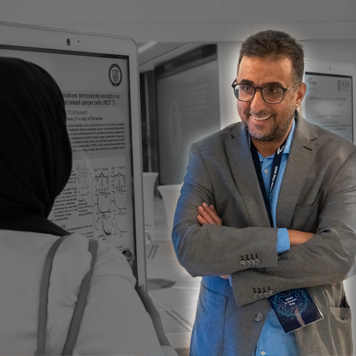
A less invasive approach to treating cancer
Although radiation and chemotherapy are powerful tools for treating cancer, they cause serious side effects. Along with cancer cells, they damage or kill healthy cells. Dr. Saad Makhseed of Kuwait University is working on a technique that promises to kill cancer cells without harming their healthy neighbors. The approach, known as photodynamic therapy (PDT), relies on a combination of three ingredients - oxygen, light and a molecule known as a photosensitizer - each of which is harmless on its own but can kill a cell if combined correctly. When illuminated at the correct wavelength, the photo-sensitizer reacts with nearby oxygen and converts it into a more active form known as singlet oxygen. These highly reactive oxygen molecules are toxic to cells, damaging their components and eventually causing their death. By making sure that the photosensitizer is absorbed only by the cancer cells and illuminates them as accurately as possible, doctors can administer PDT to kill cancer cells without harming any healthy tissue. Makhseed, a chemist, is interested in studying molecules known as phthalocyanines (Pcs) in an effort to improve their performance as catalysts. While reading about these molecules, he discovered that they are used in PDT. “Medicine fascinates me, so I started reading more about this research approach and the difficulties and challenges, and the kinds of properties needed to use these molecules in photodynamic therapy,” he said. Pcs are in principle very efficient at producing monooxygenase, but some drawbacks have limited their practical uses. The first challenge is that the Pcs particles are not soluble in water and thus tend to clump together and form agglomerates that stop interacting with oxygen. To get around this, he designed and built traps for Pcs molecules with large attachments stacked on top and bottom, like the stuffing between two donuts. By using electrically charged attachments, he hoped to prevent the particles from clumping up. Makhseed reached out to Petr zimčík at Charles University in the Czech Republic to help him analyze the new molecules. “We had some facilities that Makhseed did not have at that time, so we were able to evaluate the photo-physical properties of the compound,” zimčík said. He added, “The amendments completely hampered the agglomeration process, which is really important in this field. We really liked these molecules.” Through his continued collaboration with zimčík, Makhseed was able to improve the design of pcs. In the latter structure, the zinc present in the core of the molecules was replaced by indium metal, thus increasing its efficiency in the production of monooxygenase. A second major challenge is ensuring that only cancer cells absorb the Pcs particles. He was able to do this by attaching specific functional groups to the molecules to make them more attractive to cancer cells. For example, because cancer cells divide rapidly, their metabolism rates are higher than normal cells, so attaching Pc to a sugar molecule will make the cancer cell more willing to absorb it. Synthesizing large and complex molecules is not an easy task. Thanks to funding from the Kuwait Foundation for the Advancement of Sciences, Makhseed now has facilities to test the physical properties of the molecules he developed, but he still needs to send them to zimčík and other collaborators for testing in cell cultures and, eventually, in animal models. Makhseed recently overcame the challenge of developing repetitive synthesis techniques. "We've developed a building block with specific functionality that allows us to bind anything we want to phthalocyanines," he said. Using this technology, he can produce pcs with different add-ons to target cancer cells, whether from carbohydrates, amino acids or lipids, for example. "Using information available from biological research, we should be able to design molecules that are highly selective and favored by cancer cells," Makhseed said. Makhseed registered a patent for these molecules and their new synthesis technology, and he has high hopes for them. He said, “These technologies will not only benefit the Kuwaiti society, but also the Gulf region and even the entire world.” He added, “This type of treatment does not involve invasive procedures, so it can be performed as often as needed. It can be very selective, so it does not cause side effects in patients, and there is no need for surgery.” zimčík plans to include Pcs particles in a global project to test the efficacy of different Pcs zimčík. Besides the compounds Makhseed has synthesized, zimčík collects molecules from labs in China, Russia, Spain, Poland and elsewhere. “The biological evaluation of PDT activity is performed differently in each laboratory, which makes it difficult to compare results,” said Makhseed. So, we wanted to standardize the protocol and collect and compare the best published molecules to see what differences there are between them.” Makhseed's new technique of modifying the structure of phthalocyanines also opens up the possibility of synthesizing them for use as catalysts, bringing it back to the starting point. In addition to his work on photodynamic therapy, the researcher is developing modified Pcs particles to absorb carbon dioxide or purify water, and is in the process of initiating a collaboration with a laboratory at Durham University, UK, to develop organic light-emitting diodes. “The knowledge we gain is very important for Kuwait,” Makhseed said. This research gives us new information and helps us develop optimal molecules more quickly. I am working on building cooperative relations with external parties and returning that knowledge to Kuwait.” Makhseed hopes that his work will develop into an effective treatment for cancer and become available to everyone. He said: “What we have now can be used as a drug in the future if funders help us find the right research teams and prepare clinical trials. I want to be part of a field where we help people get treatment and even a full recovery.”
Learn MoreNews
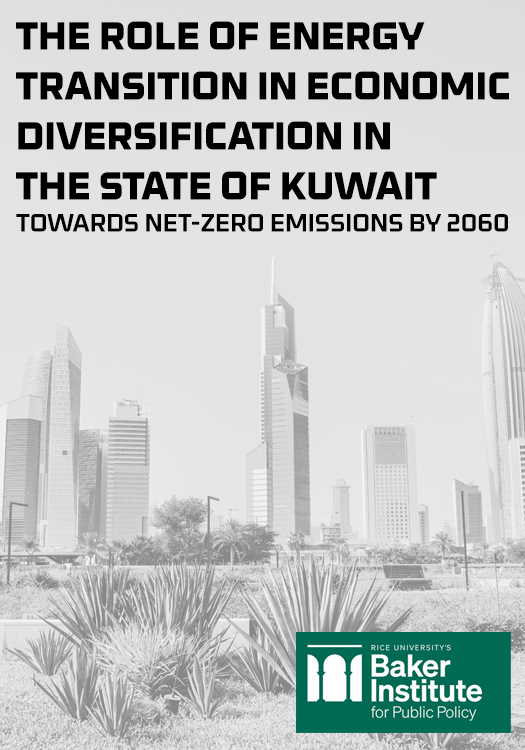
The Role of Energy Transition in Economic Diversification in the State of Kuwait – Towards Net-Zero Emissions by 2060

KFAS sponsors online training courses on renewable energy and energy efficiency in association with Renewables Academy in Berlin
Kuwait Foundation for the Advancement of Sciences offers an opportunity to finance a variety of online training courses on renewable energy and energy efficiency in association with Renewables Academy (RENAC). Training includes intensive support through discussion forums, in addition to reading material, multimedia, and self-assessment tests, all with flexibility to study/attend at any time .Participants receive a certificate from RENAC Academy when they successfully complete the program
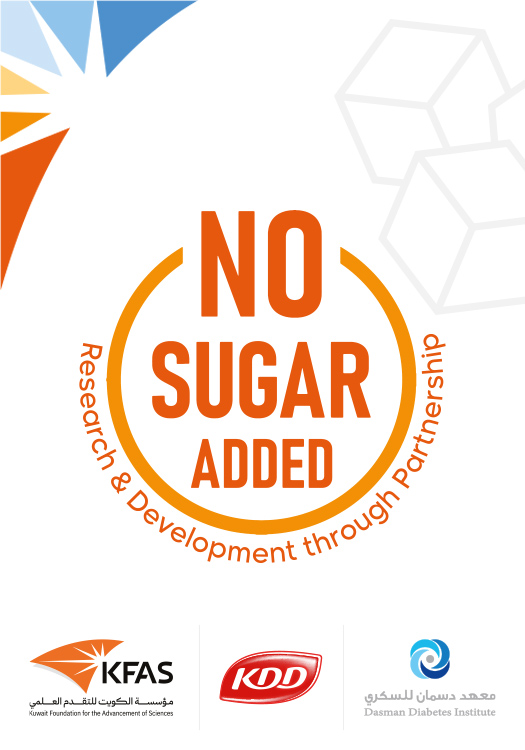
No Sugar Added – Research & Development through Partnership
Research & Development through Partnership
The event will disseminate the results of a collaborative project initiated by KDD, funded with thanks by KFAS and clinically researched by DDI aimed at developing a suite of no-added-sugar products created on a science-based metabolic matrix to reengineer food and provide clinical evidence of efficacy.
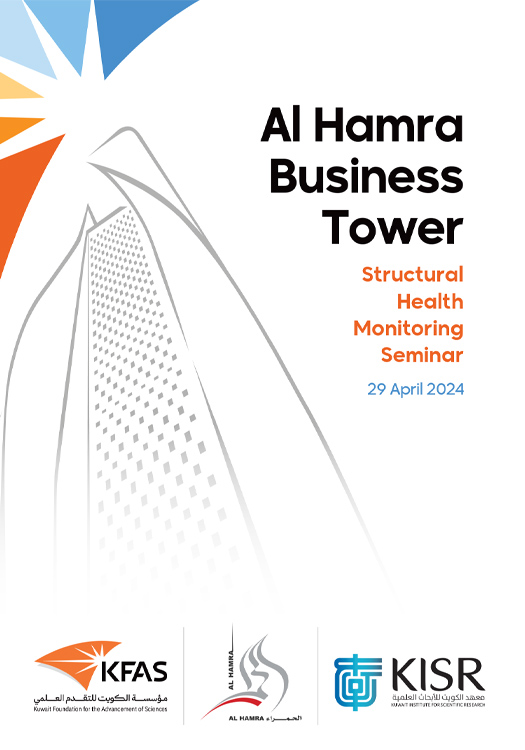
Al Hamra Business Tower: Structural Health Monitoring Seminar
In Partnership with Al Hamra Business Tower & Kuwait Institute for Scientific Research (KISR)
This event, in collaboration with KISR and Al Hamra Business Tower, will present the results stemming from a research project funded by KFAS entitled “Ground Motion Modeling and Structural Monitoring of high-rise Buildings” which was implemented at Al Hamra Business Tower.

The 21st Annual Meeting of Science and Technology in Society Forum 2024
KFAS will sponsor 3 potential researchers to attend "Dialogue between Young Leaders and Nobel Laureates"
KFAS nominate and sponsor 3 Kuwaiti young leaders to attend The 21st Annual Meeting of Science and Technology in Society Forum 2024. They will attend all the sessions of the STS forum as regular participants. Representing the younger generations who bear the future of humankind, they will be expected to contribute their perspectives to the interactive dialogues of the forum. They will be able to build networks with the world’s top leaders and their peers and, in time, be part of the emerging movement to resolve the new types of problems stemming from the application of science and technology.
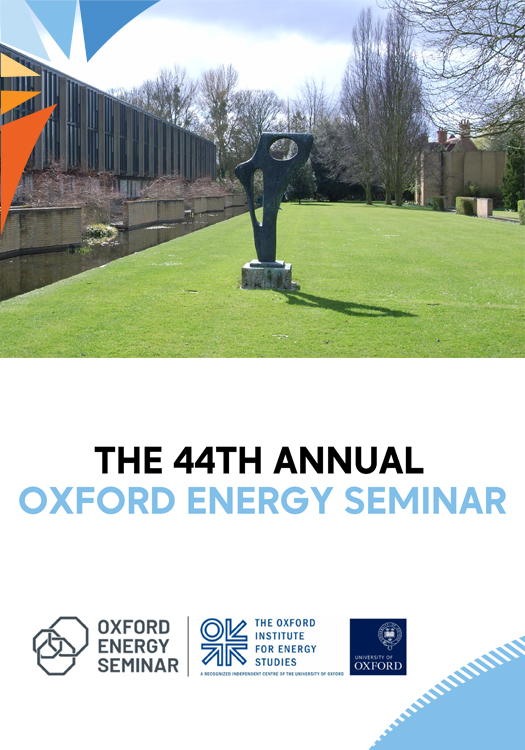
The 44th Annual Oxford Energy Seminar
KFAS is sponsoring one seat to participate in the 44th Oxford Energy Seminar. This Seminar is an opportunity to get intensive exposure to the latest developments in thinking and knowledge on problems of energy. A chance to understand the forces shaping the future environment in which both investment and policy decisions relating to energy will be made. There will also be a privileged opportunity for close contacts and fruitful dialogues between participants from petroleum exporting and importing countries.
